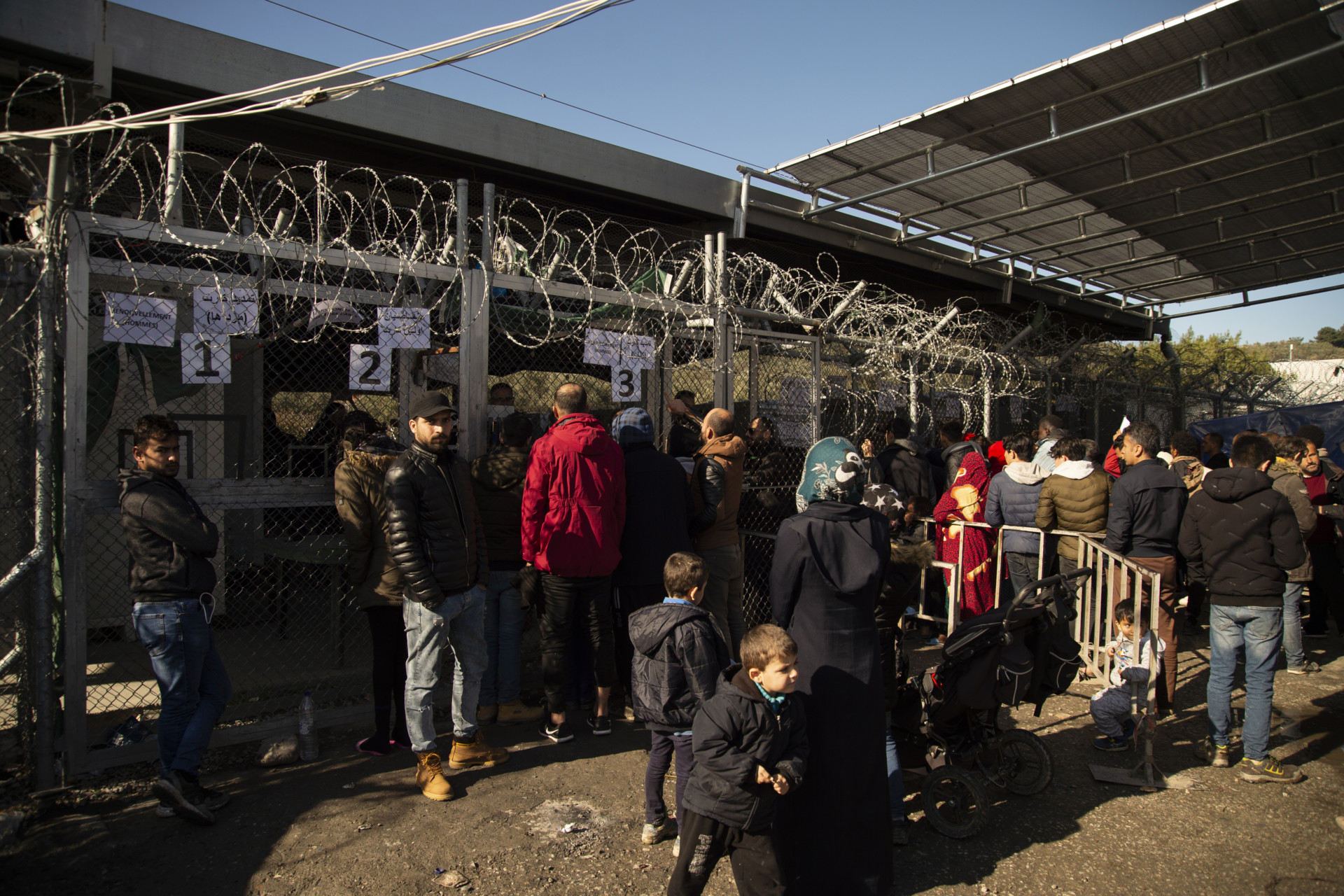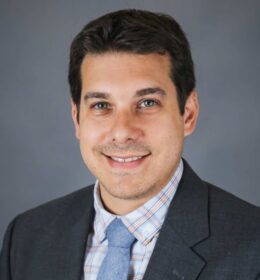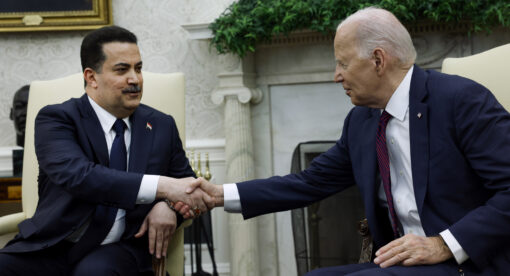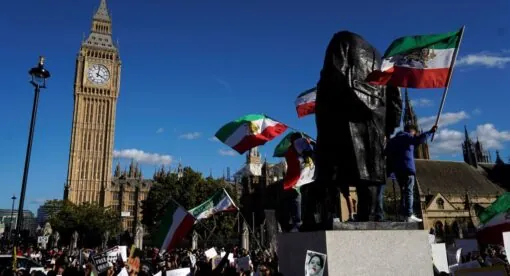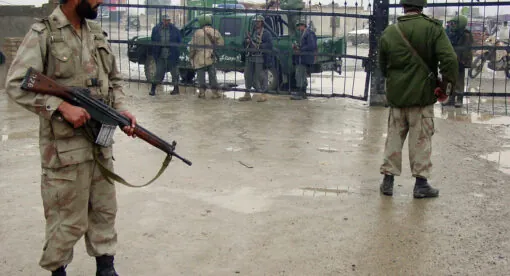As the Middle East keeps lurching from one crisis to another, the U.S. government’s traditional view of these crises – through a “nation-state first” lens – and engagement in these crises with said lens will likely continue producing policy failures or dead ends. These dismal results in the region have to do in part with a failure to grapple with the larger trends afoot that the Arab Spring and the subsequent decade have revealed: namely, the interconnectedness of various ethno-religious communities spanning multiple countries, and the direct impact they have on the politics of their respective countries. These communities existed in their current configurations long before the artificial determination of the Middle East’s modern borders. Ignoring this interconnectedness and treating each country as a self-contained unit whose crisis can be solved without holistic policies -taking those connections into account- will continue to diminish U.S. influence in the region. Syria’s collapse, and the way it has sucked the entire region down with it and created substantial geopolitical ripple effects, is proof of that.
Conversely, as seen in Syria, local and regional nation-states’ propensity to use awareness of those communities to carry out demographic engineering is worsening the prospects for any long-term stability. Instead, this practice – used as a tool to maintain power or exert influence in a complex conflict – is seeding the ground with new communal conflicts that will stretch well into the future, as demographic engineering is very hard to undo.
The portions of the U.S. government that engage in diplomacy, humanitarian aid, and development need to restructure their portfolios and programming parameters to better consider the dynamics of communal interconnectedness and demographic engineering. If anyone is under the delusion that Iraq and Syria, for example, can each be stabilized on their own without considering the conflict dynamics of the other, have fundamentally misunderstood how these conflicts have evolved. The danger of such tunnel vision will be the inability to see the re-emergence of other future conflict trends, whether they be transnational ideological movements like the Islamic State or demands for pan-ethnic communal self-determination in lieu of the provision of clear rights and political access. U.S. policymakers need to expand their analytical scope and more critically consider that communal-level political considerations can now influence and shape wider geopolitical trends. Pretending they are trivial and not worth consideration is a dangerous way of making policy, especially in the Middle East.
Sykes-Picot and Communal Separation
The breakup of the Ottoman Empire and the Sykes-Picot agreement after World War I redrew the map of the Middle East in ways that sowed the seeds of many current conflicts. Ethnic, tribal and religious communities who once lived across vast stretches of the region without borders suddenly found their communities dissected by arbitrary boundaries, assigned newly minted national identities, and under the control of either colonial occupiers or newly formed governance structures that lacked popular support at their foundation. Modern-day foreign policy often overlooks the cultural, linguistic, and communal cross-border connections which make policymaking that holds the nation-state sacrosanct, obsolete.
Modern-day Syria is a product of this history and the subsequent choices made by French colonial occupation in the 1920s to raise up specific minority communities to supply their local armed forces with manpower, such as the Alawi, Christian, and Druze communities. This, coupled with encouraging additional Kurdish migration from Turkey to the Jazeera region (northeastern Syria) in the 1920s, set the stage for the sectarian divisions and structural inequalities that have plagued the Syrian state ever since. Syria has always been linked to its neighbors via shared ethnic, religious and linguistic communities, so what happens in Syria does not stay in Syria. Into this morass, the Baath Party and its concept of “socialist agrarian revolution” arrived.
Historical Demographic Engineering in Syria
In 1958, Agrarian Reform Law No. 161 was passed in Syria, setting a maximum amount of land an individual could own. As a result, 1.37 million hectares of excess land was redistributed to almost 17% of Syria’s population. Wealthy landholders saw their property confiscated, broken up and doled out to the wider population. When Hafez al-Assad took power in 1970, he was able to use this system to favor Baath Party supporters and strengthen his grip on power.
Hafez al-Assad continued aggressive strategies of land redistribution and forced population transfers through large agriculture and infrastructure projects in the 1970s. The “Arab Belt” project along the Syrian-Turkish border, meant to dilute the now dominant Kurdish population, was one such program. With the building of the Tabqa Dam and the creation of Lake Assad on the Euphrates River in 1973, numerous Arab communities were displaced by the resulting floods. Many of these “submerged Arab” families were then given expropriated land along the Turkish border. The purpose was to divide Kurdish communities in Syria, Turkey, and Iraq from one another, thus mitigating the nationalist awakening among the Kurds that threatened the territorial integrity of all three countries. Finding a solution for Kurdish self-determination continues to be a major transnational issue, and neither the region nor the global powers involved in the Middle East – such as the United States and Russia – has addressed it seriously.
The 1980s saw another round of population movements, this time as a result of Hafez al-Assad’s attempts to fortify and improve the Syrian military’s capability to fend off a potential attack from Israel or other nations. Thousands of troops were stationed around military installations ringing Damascus City, and with them came an officer corps with a disproportionate number of Alawites and their respective families. The Alawite community in Damascus grew from around 300 in 1947 to 500,000 in 2010. Other minority communities were also encouraged to expand and “interrupt the Sunni crescent (a reference to the Sunni-Arab suburbs almost encircling Damascus City) … [such was] … the case in the large suburb of Jaramana, which beginning in the 1980s was developed along the road to Damascus International Airport, fitting the regime’s strategic plan to separate the city’s Sunni suburbs, West and East Ghouta.” Attempts to ring other major metropolitan areas or encourage direct migration into urban cores from the Alawite community occurred in Latakia City and Homs City, both of strategic importance to the Assad regime for various reasons.
2011-2020: Ongoing Demographic Engineering
The current civil conflict in Syria, which began as a popular peaceful revolution in 2011, has resulted in the mass forced displacement of millions of Syrians – mostly Sunni Arabs – from large portions of the country. Specifically, the Sunni communities in Damascus City and suburbs of Damascus, Homs City, Jebleh, and Latakia have all been displaced in order to support Assad’s continued grip on power in “useful Syria” (i.e., the country’s western portion, stretching from Damascus City to Aleppo City). As these areas have fallen back into regime hands, they have been repopulated by regime loyalists and the families of Iranian proxy militias who are mostly Shiite and from Iraq, Afghanistan, and Lebanon. Colleagues who still have family in Homs City explained that the city is filled with these families, many of whom are not Syrian. Locals know this by the Arabic dialects now being used, the manner of dress, and other social cues which make it known that these “strangers,” as they are called, are not even from Syria, let alone Homs.
Other communities such as Qusayr and Tal Kalakh near the Lebanese border are also being demographically transformed. In 2018, the Assad regime passed Law 10, which is designed to contribute to “a legal scheme intended to enable the Syrian government to designate land anywhere in the country for redevelopment … Property owners whose names do not appear on the list or are not included in land registries will have one year to make a claim of ownership for the purposes of compensation, as all property owners will be displaced from their properties as a result of the government’s redevelopment plans.” This law has enabled the Assad regime to legally dispossess thousands of Syrian households of their land in these former rebel strongholds, so that the land can be developed and handed over to regime loyalists. A further review of this means of displacement is laid out in a policy brief called, “Violations of Housing, Land and Property Rights: An Obstacle to Peace in Syria” recently published by the organization PAX, which focuses on civilian protection in conflict zones. This brief describes in detail the legal framework the Assad regime is using to steal the properties of those who have been displaced by the conflict, stating that “this legal framework underpins an apparent plan for demographic change in Syria whereby individuals or communities perceived as government opponents are systematically dispossessed, cementing displacement as a permanent reality for those forced from their homes. Meanwhile Assad loyalists profit from expropriated land and property, and investments benefit only the country’s economic elite.”
The regime has created further demographic changes through the besiegement and “reconciliation” of rebel strongholds, whose residents have over the last several years been relocated to the last remaining rebel stronghold in Idlib Province. Since the start of the conflict, almost 6 million Syrians have become refugees, and an additional 6 million are internally displaced, with Syria accounting for “the world’s largest number of forcibly displaced people.” The vast majority of those Syrian refugees have gone to neighboring countries such as Turkey, Lebanon, Iraq, and Jordan. This means that while these communities have been forcibly divided, they remain close enough to be in contact with their extended families, maintaining a link that will ensure that the seeds are sown for a future conflict in the region involving subsequent generations of Syrians who could wish to “take back” their country.
Additionally, as Syria has turned into a regional and global proxy conflict, other countries in the region have become involved in demographic engineering and forced displacement – notably Turkey, which has invaded and occupied two Kurdish-majority enclaves, internally displacing hundreds of thousands of Kurds and sending a new wave of refugees mostly into Iraq. This further complicates the domestic politics of both countries, which are embroiled in armed conflicts with their respective Kurdish communities. Iran and Hezbollah have also been involved in this process. Hezbollah specifically, was tasked with clearing the opposition strongholds close to the Lebanese border, and Iranian forces have been instrumental in besieging and displacing numerous communities.
Conclusions
The demographic changes in Syria will have a wide-ranging impact on the future of the Levant, with most refugees in neighboring Turkey, Lebanon, Jordan and Iraq are unlikely to return in this generation. U.S. policymakers need to be aware of the cross-communal dynamics which have existed historically and have been further reinforced by the current wave of displacement and the rise of transnational terrorist organizations. Pretending that the borders drawn by the Sykes-Picot agreement have any meaning in terms of these dynamics leads to flawed, tunnel-vision policy that wastes time, energy, and resources. Instead, planners should start to think about foreign policy, aid, and development programming from the perspective of “connected files.” For example, Iraq and Syria are connected by numerous cross-communal systems including Arab tribes and Kurds, shared geographic space such as the Euphrates River basin, and historic economic ties via land routes. It is no coincidence that the implosion of Syria helped lead to the rise and subsequent takeover of large portions of Iraq by the Islamic State and the increased political and economic turmoil seen in Turkey, Lebanon, and Jordan.
In order for U.S. foreign policy to be effective, the State Department and USAID need to fundamentally restructure the way in which country files are ordered. There should be teams of civil and foreign service officers who participate on one regional or sub-regional team, encompassing multiple countries, communities and trans-national movements. While each officer would bring their own expertise to the team they are on, the team’s wider pool of knowledge and cross-communal understanding would allow the creation of better informed, more holistic strategies and policies. Additionally, having a team of this nature, and allowing these officers to stay longer in their respective posts and develop deeper regional expertise and institutional memory, is key to ensuring policies are implemented that can be sustained for the long-term and survive changing administrations and top cabinet officials.
Likewise, funding parameters and the ways in which Congress appropriates money need to reflect this new reality. The State Department and USAID need the flexibility to have, for example, a combined Syria/Iraq/Turkey file. This would allocate money for programming across all three countries, moving money when required to meet the priority needs/demands of a specific cross-border dynamic or community with ease, being integrated into the larger U.S. policy aims for each country as individual bilateral relationships. The connections are there; now policymakers need to acknowledge them and develop a new way of making policy that elevates their importance.
Sasha Ghosh-Siminoff is the Executive Director and co-founder of People Demand Change Inc., a socially responsible aid and development startup that focuses on monitoring and evaluation of humanitarian aid and development programing, supporting the capacity of nascent civil society organizations and providing long-term aid and development solutions in the MENA region, including work in Syria, Libya, Yemen, Iraq, Lebanon, Turkey, and Tunisia. The former Executive Director at the Syrian Emergency Task Force and a journalist with Congressional Quarterly, Mr. Ghosh-Siminoff has spent a great deal of time on the ground in Syria. He has given many briefings on Syria to various international institutions and governments, including the United States, Canada, and Germany.
The views expressed in this article are those of the author and not an official policy or position of the Newlines Institute.

